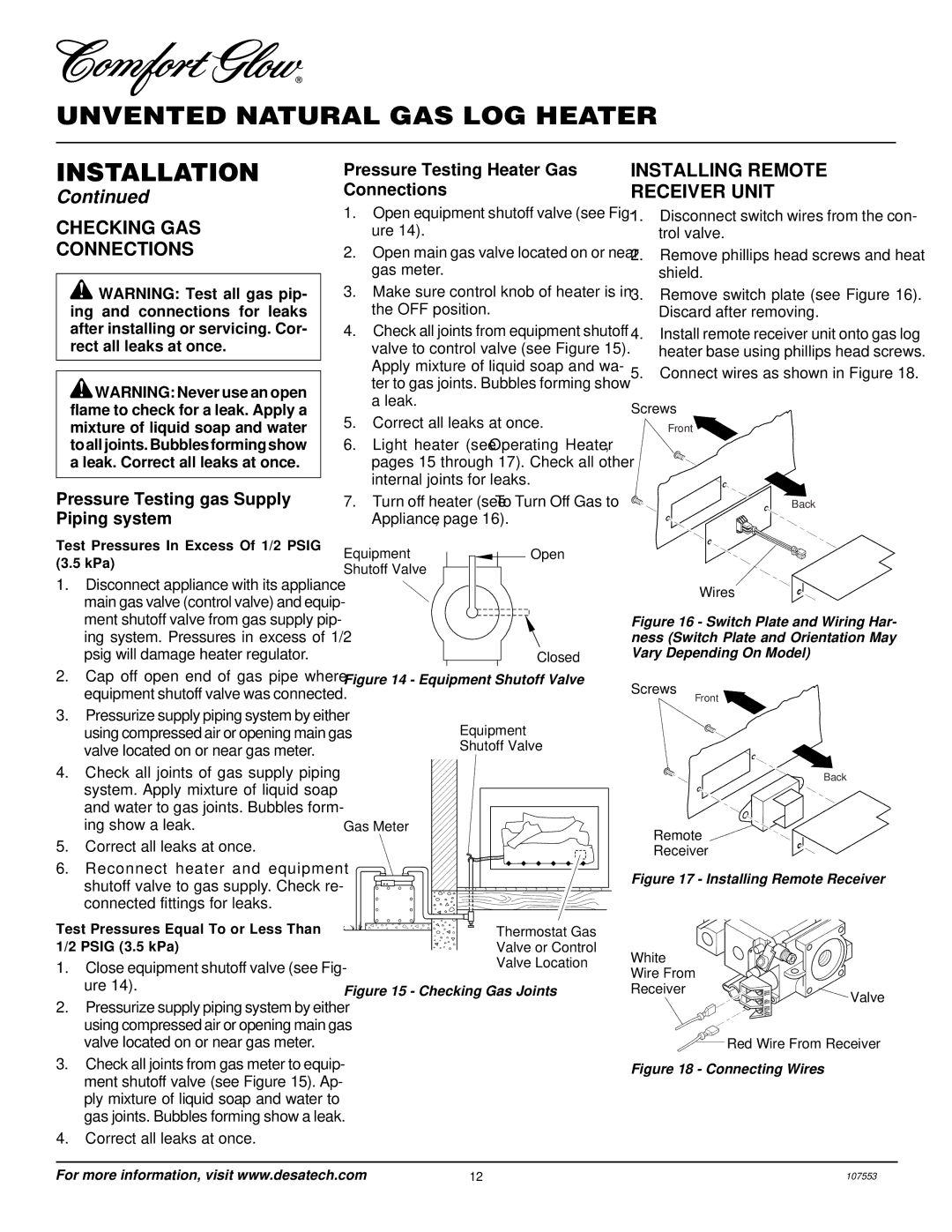CCL3924NR, CCL3930NR specifications
The Desa CCL3930NR and CCL3924NR are advanced heating solutions known for their efficiency and innovative features. These models stand out in the market due to their commitment to both performance and user convenience.One of the defining characteristics of both models is their energy efficiency. They utilize cutting-edge technology that optimizes fuel consumption while delivering robust heating output. The CCL3930NR, in particular, is designed for larger spaces, providing up to 30,000 BTUs, making it an excellent choice for garages, workshops, or any sizable area requiring reliable warmth. On the other hand, the CCL3924NR is geared toward medium-sized spaces, offering a maximum of 24,000 BTUs, making it suitable for residential settings or smaller commercial environments.
Both units feature a user-friendly thermostat that enables easy temperature control, contributing to user comfort and convenience. This digital thermostat allows for precise temperature settings, ensuring the environment remains consistent and cozy. The programmable features also provide flexibility, allowing users to set schedules according to their needs.
Another significant aspect of these models is their safety technologies. Equipped with robust safety mechanisms, both the CCL3930NR and the CCL3924NR automatically shut off in case of overheating or if the flame goes out unexpectedly. This ensures peace of mind for users, especially in settings where safety is paramount.
The construction of these heaters reflects durability and intention. They are built with high-quality materials designed to withstand the test of time, ensuring longevity and consistent performance. The sleek design also offers aesthetic appeal, allowing them to fit seamlessly into various environments.
In terms of fuel types, both models are versatile, accommodating a variety of fuels such as propane and kerosene, making them adaptable to different user preferences and availability of fuel sources. This flexibility is further enhanced by the portability of the units, enabling easy relocation as spaces or heating needs change.
In conclusion, the Desa CCL3930NR and CCL3924NR represent cutting-edge heating solutions that combine efficiency, safety, and user-friendly features. Whether for personal or professional use, these models offer an effective way to ensure comfort in various environments.

